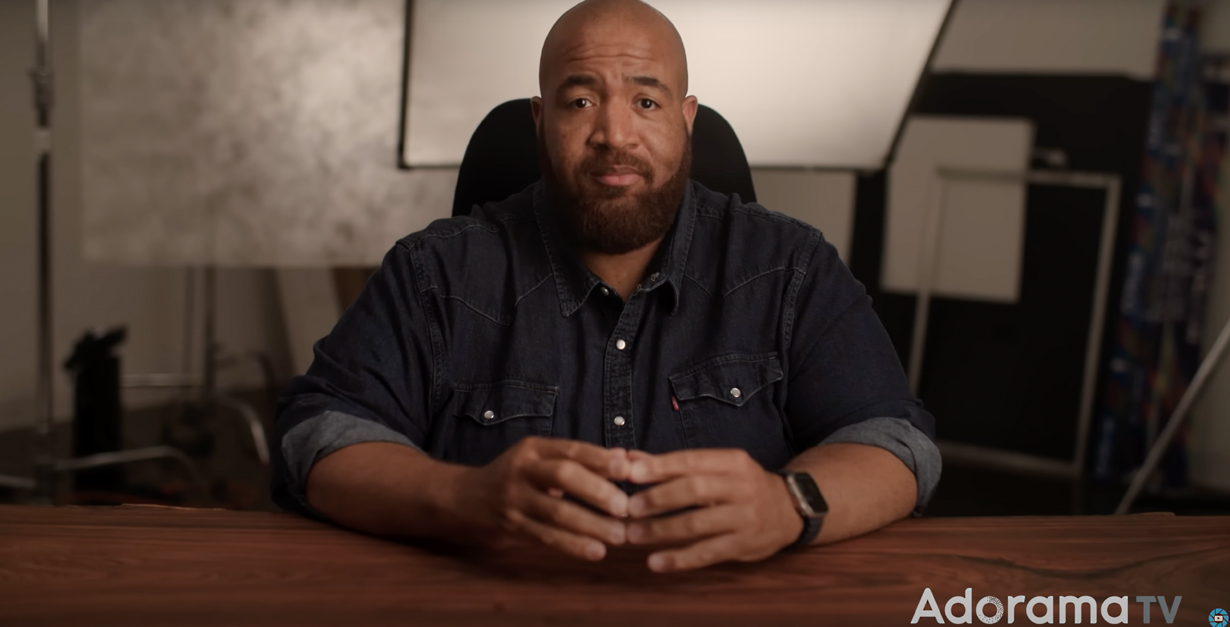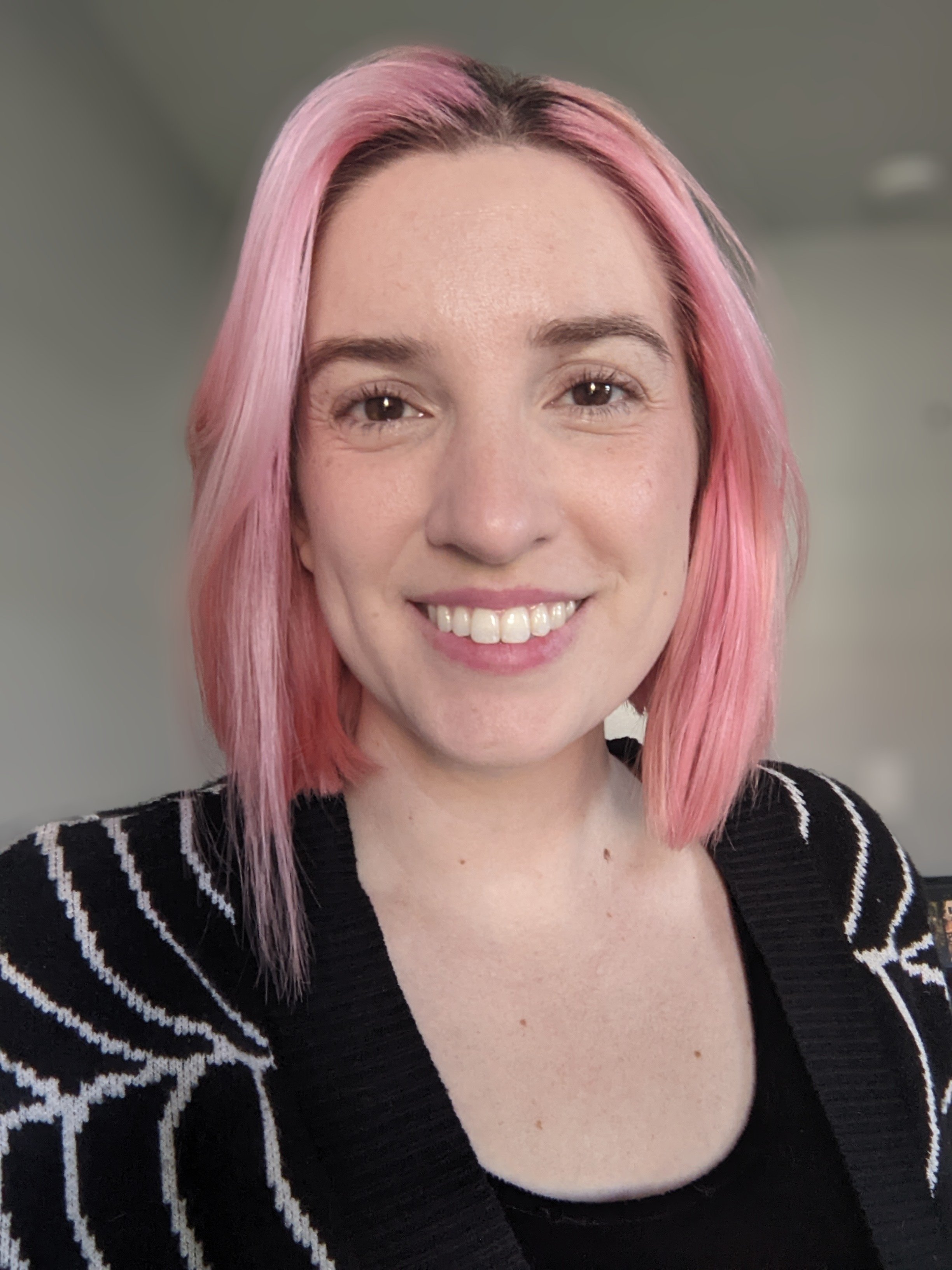Fashion and Commercial Photographer Ab Sesay recently posted up a video on AdoramaTV where he examines over 30 different types of diffusion materials, including a variety of Rosco diffusion filters. Watch the video below to see how, using a spotlight, a model, and a white wall, he demonstrates the advantages and disadvantages of each diffusion option.
The Setup
A set was built to replicate light shining through a window towards a model. The actual light source was a spotlight that closely resembled sunlight shining in, which allowed for a very contrasty image. To minimize light bouncing around the set, the light was kept close to the edges of the window and the set was enclosed.
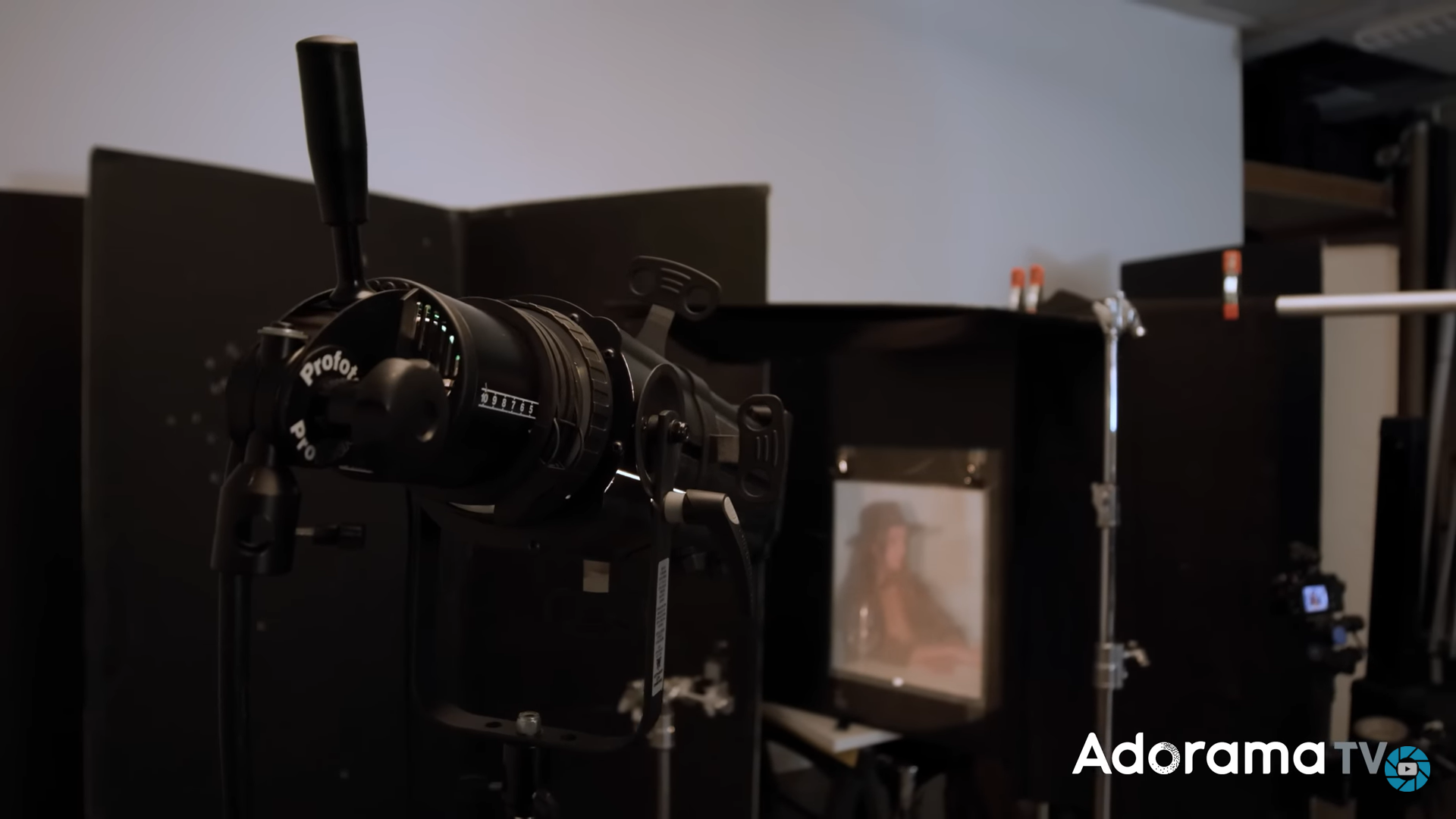
Soften Reflected Highlights
One of the goals of this experiment is to train your eye on what to look for when choosing diffusion materials. The wine glass on the table, for example, is placed in the shot so that you can understand how the beam of light is being changed by the diffusion. Without diffusion, it has very specular highlights, represented in the bright spot of light on the side of the glass. But, by adding a diffusion like R3020 Light Opal Frost onto the light, the highlights bloom a bit more and the shadows on the table soften.
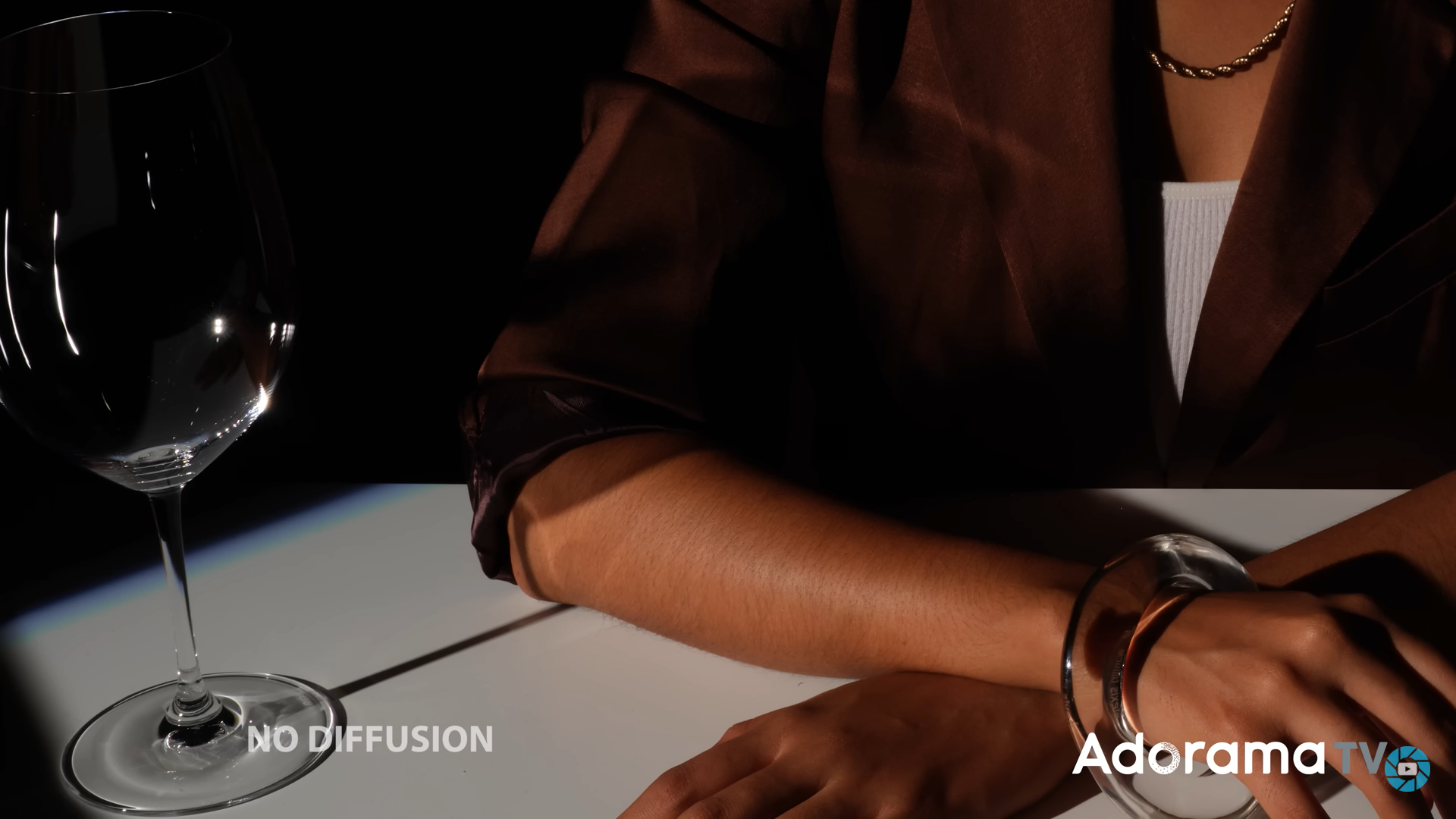
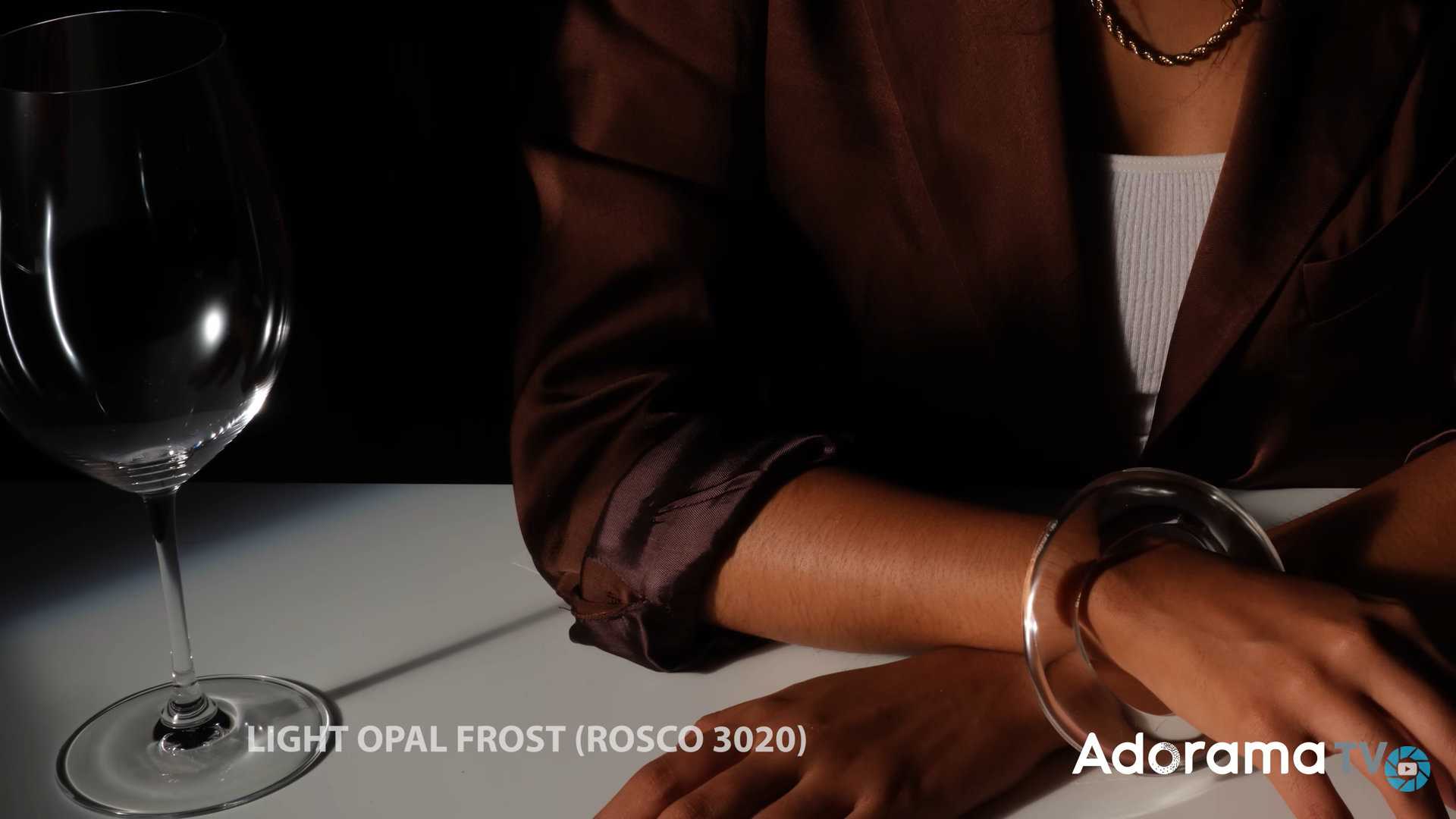
The Balance Between Softening & Scattering
The shadows on the wall to the left of the model demonstrate how much of the beam is being scattered. Comparing the difference between a heavy diffusion filter, like R3000 Tough Rolux, and Magic Cloth, we see how much less the Rolux scatters the beam by looking at the softened shadows in the background. This is important when lighting a scene because both had similar softening on the talent, but the Tough Rolux had less light pollution in the space.
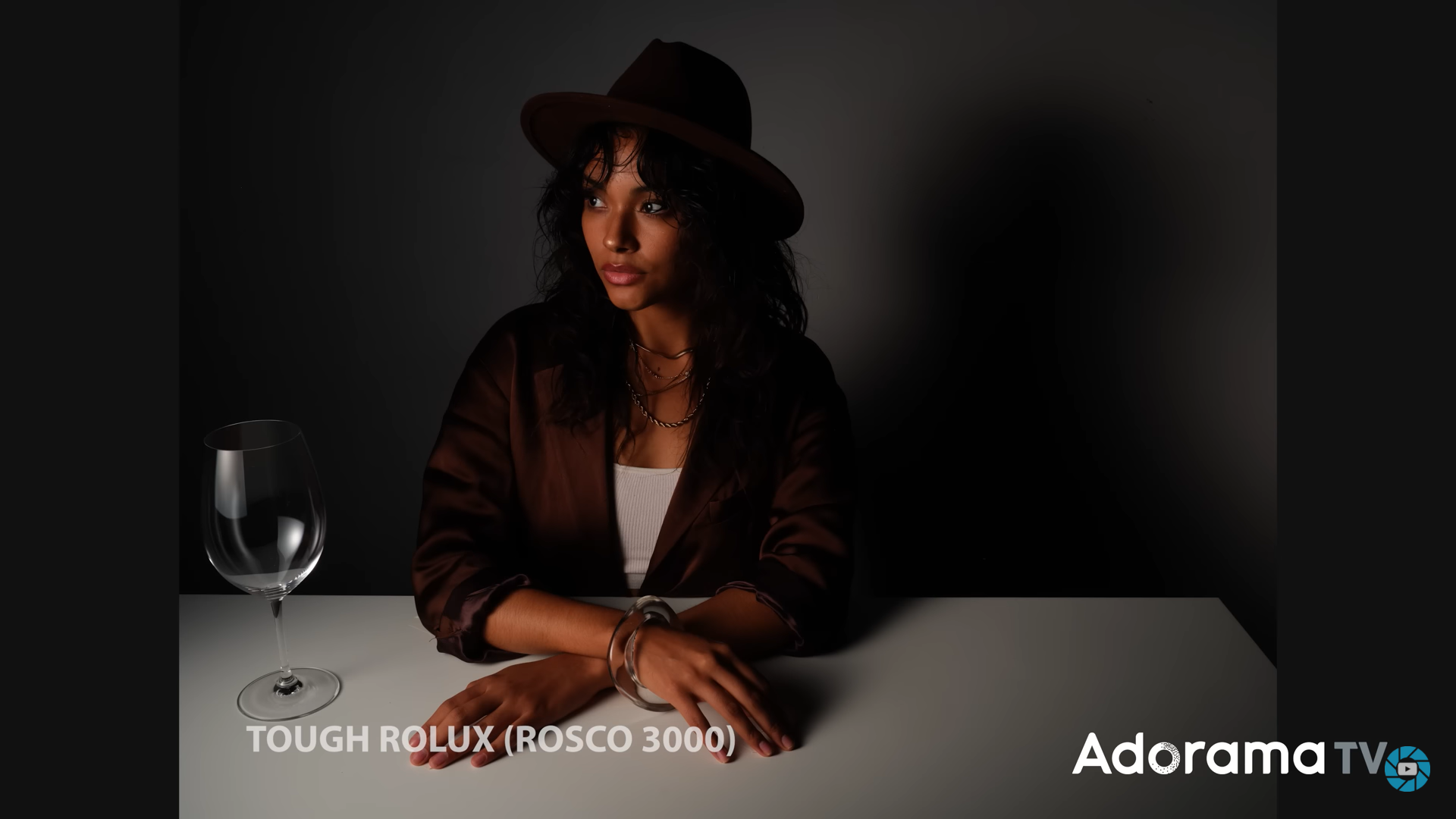
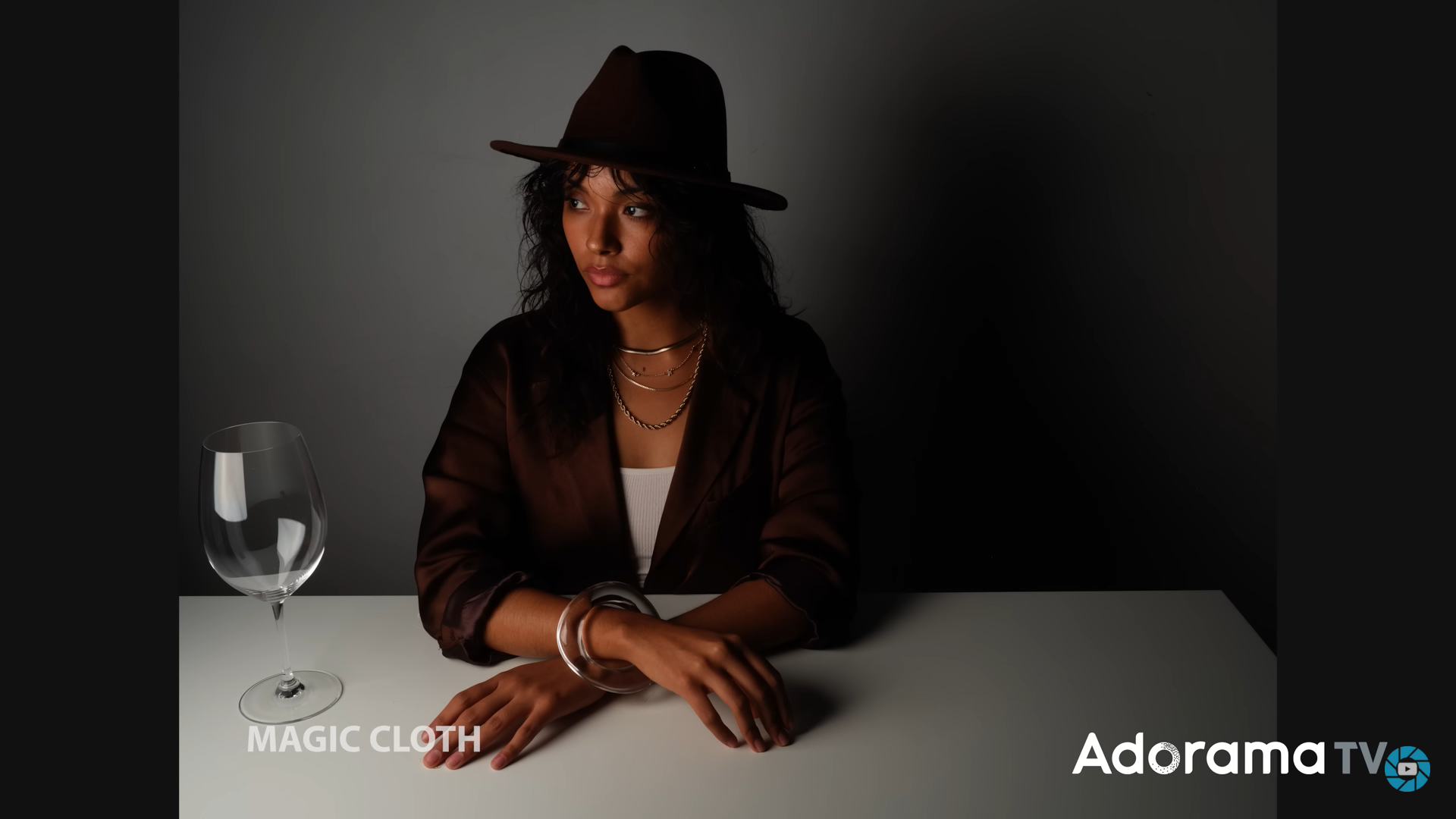
The shadow on the wall to the right of the model helps determine three things: how much of the light is passing through the diffusion material versus how much is being scattered, how much light is wrapping around the model, and how the light is being beamed. For example, bleached muslin is a very thick but porous diffusion material. Some of the light passing through the window is unaffected and still casts a hard shadow but the overall contrast to the image has been greatly reduced.
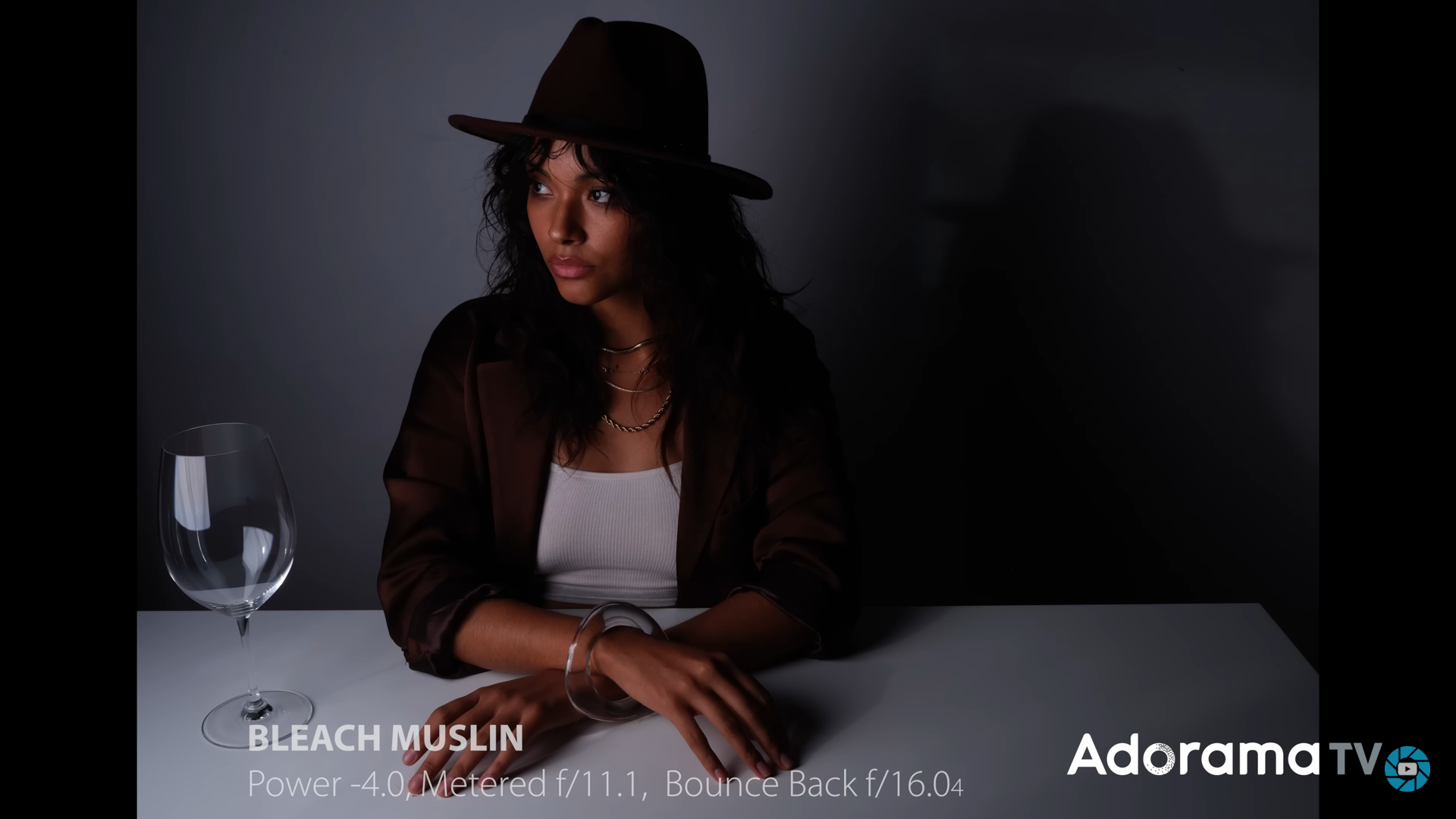
Stretch The Beam – Stretch The Shadows
Ab also examined Rosco’s two directional diffusions that can stretch the beam depending on how they are oriented on the light. R3011 Tough Silk, for example, when placed horizontally on the light, gives vertical feathering to the shadows. In contrast, when placed vertically, it gives horizontal feathering to the shadows.
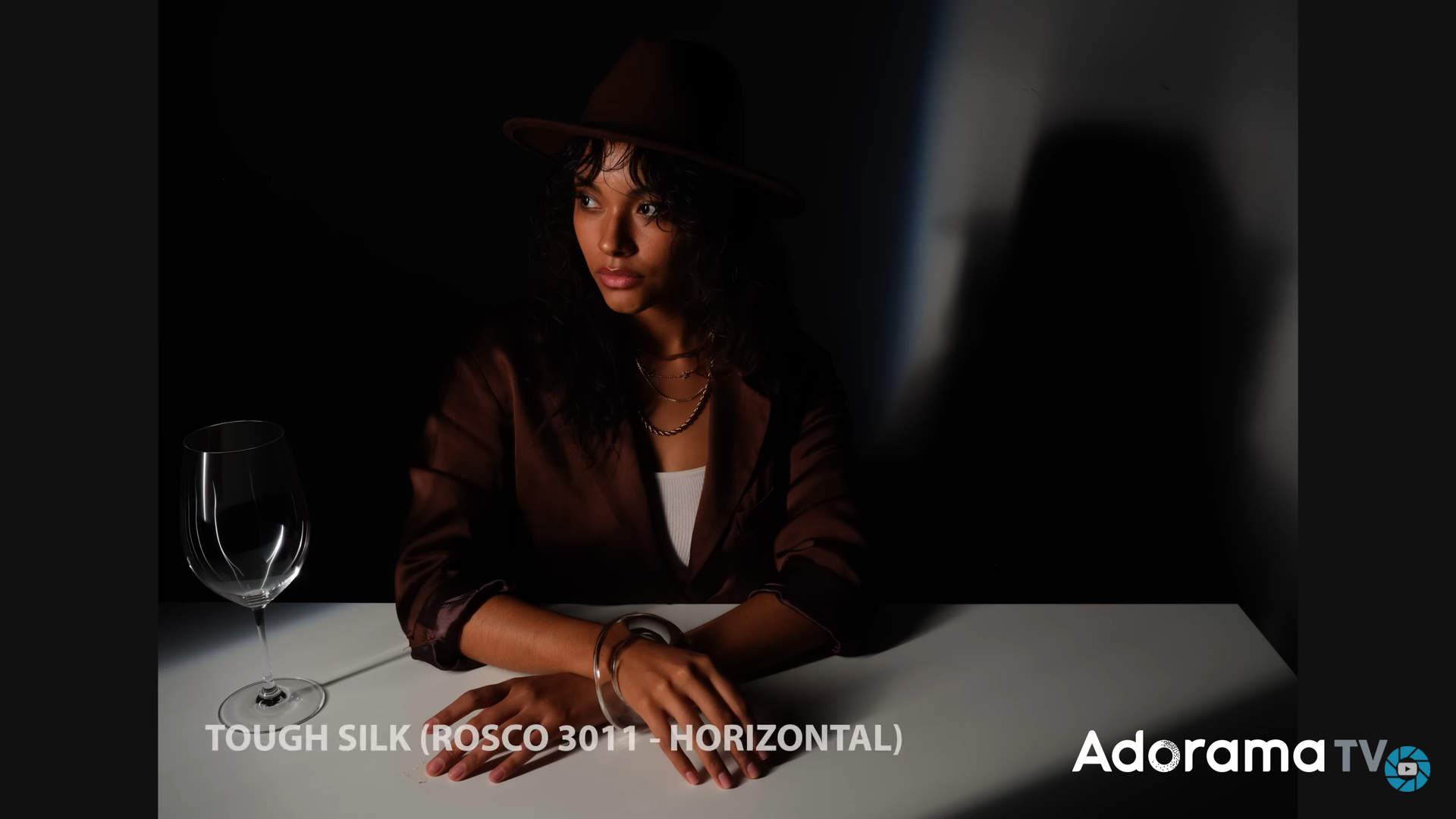
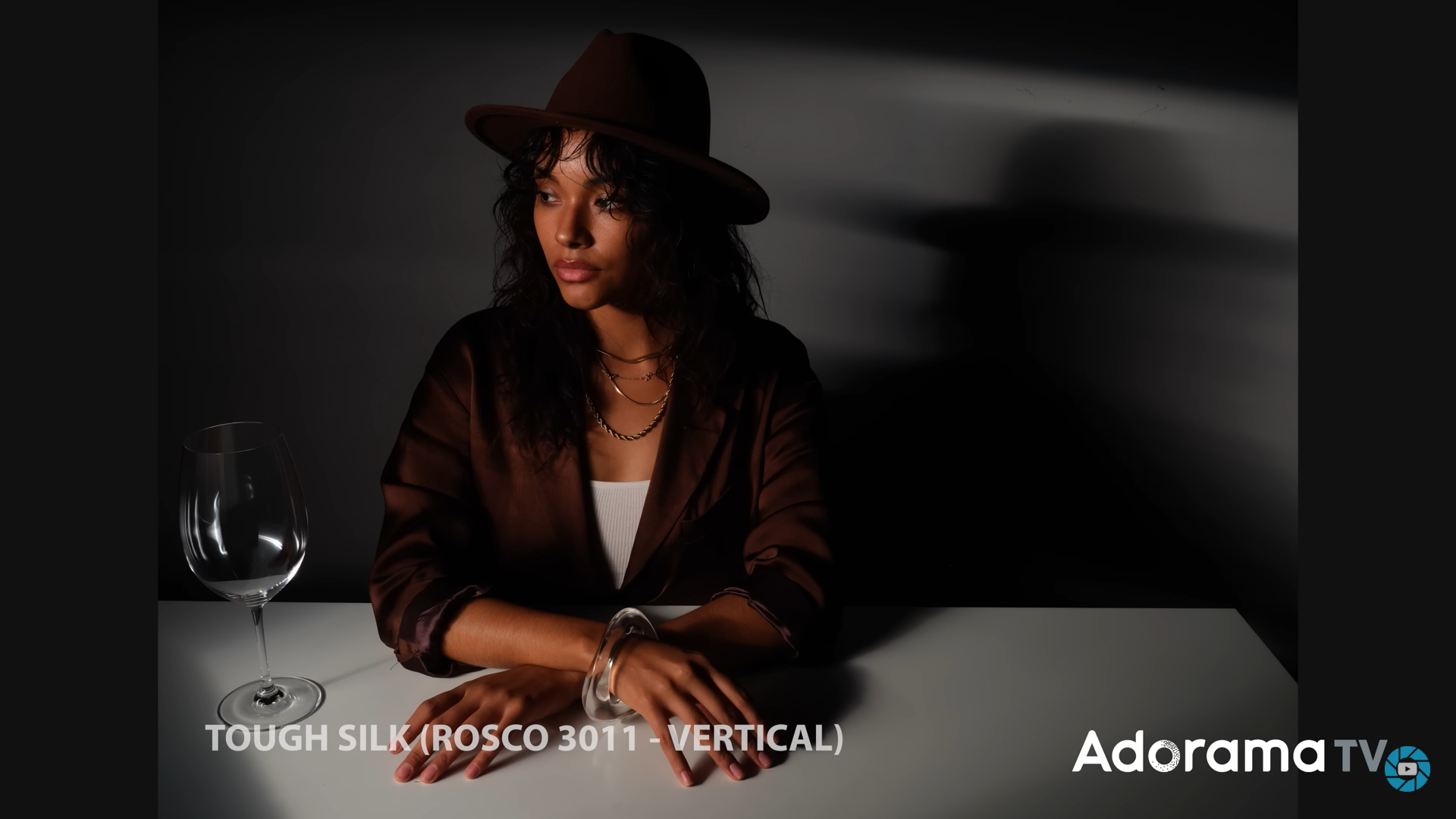
Let’s Talk About Falloff
Placing a diffusion between a light source and your subject will oftentimes affect how far the source can travel and still effectively light a scene or subject. This is called falloff. Compare the brightness on the table and the brightness on the wall below to understand how the light is falling off. When lighting without diffusion, your subjects could be feet away and still at relatively the same exposure. However, if you introduce diffusion into the shot, you may need additional light for the subject furthest away from the source.
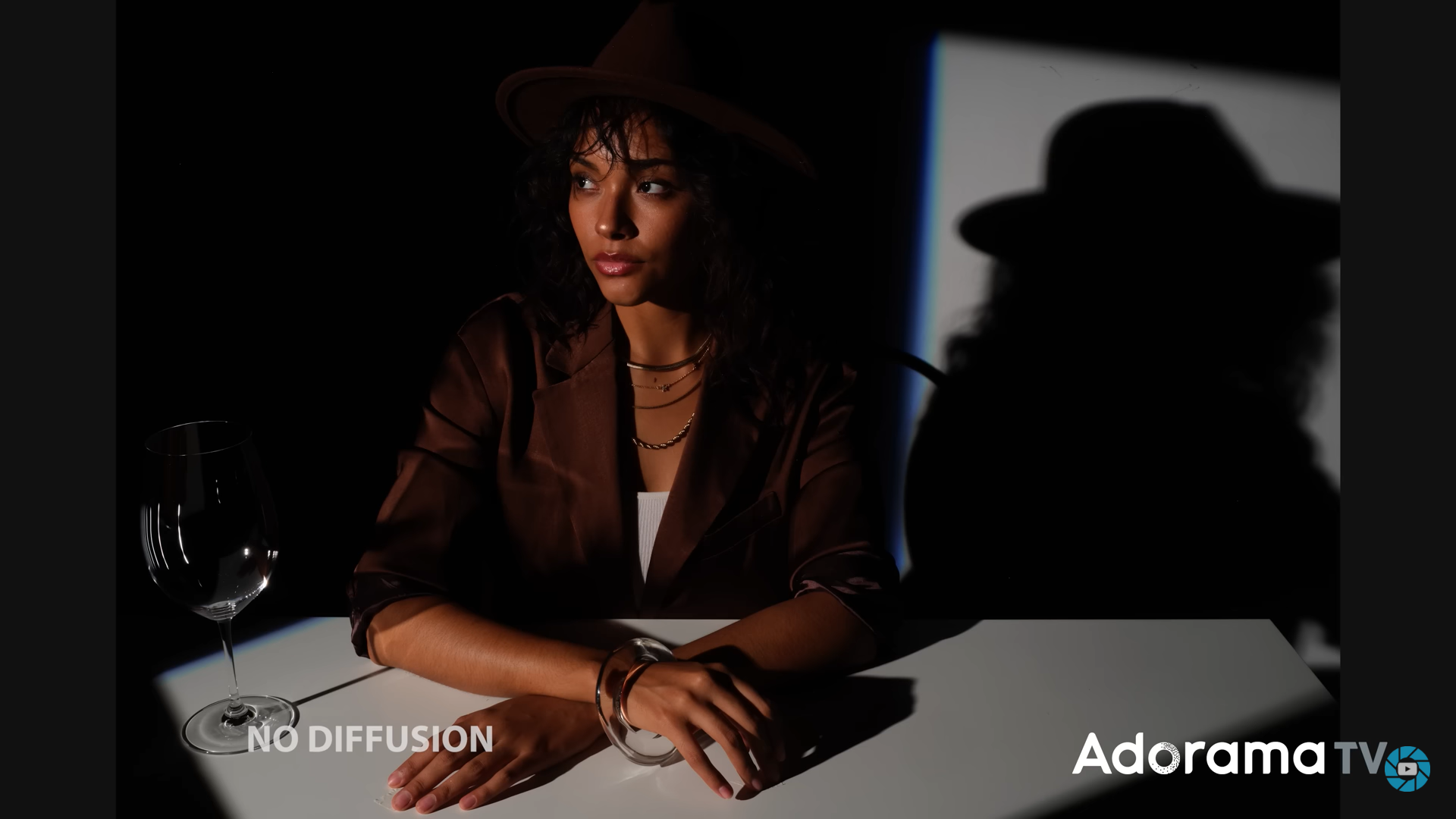
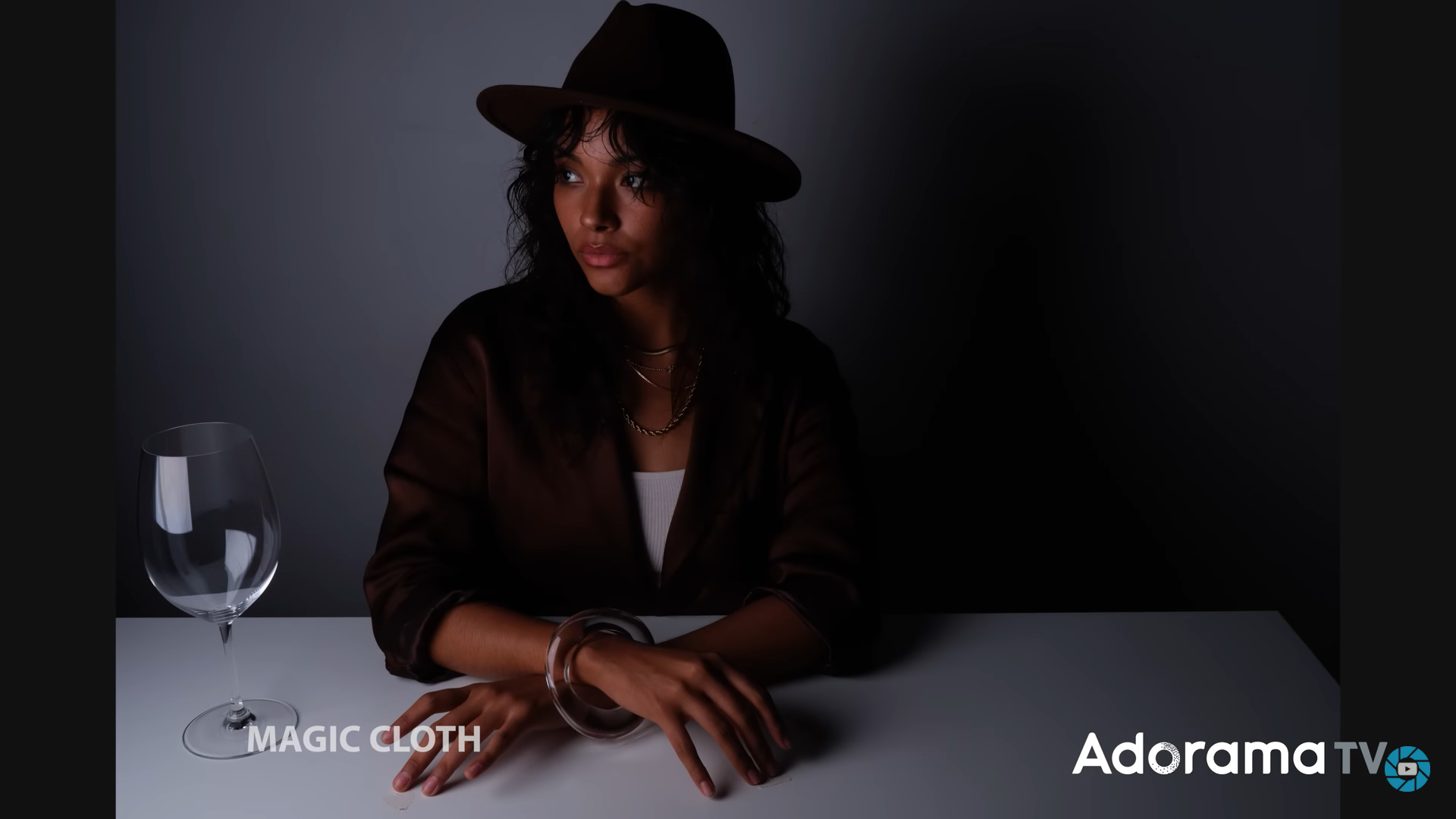
Soft Light For Facial Illumination
One of the most important reasons to use diffusion is to soften the shadows and highlights seen on a human face. Look at the comparison photo below to see how the specular highlights in the lips and nose completely change, as well as the softness of the nose shadow. The chin shadow is also filled in, you see less texture in the model’s skin, and the catch lights in the eyes are completely different.
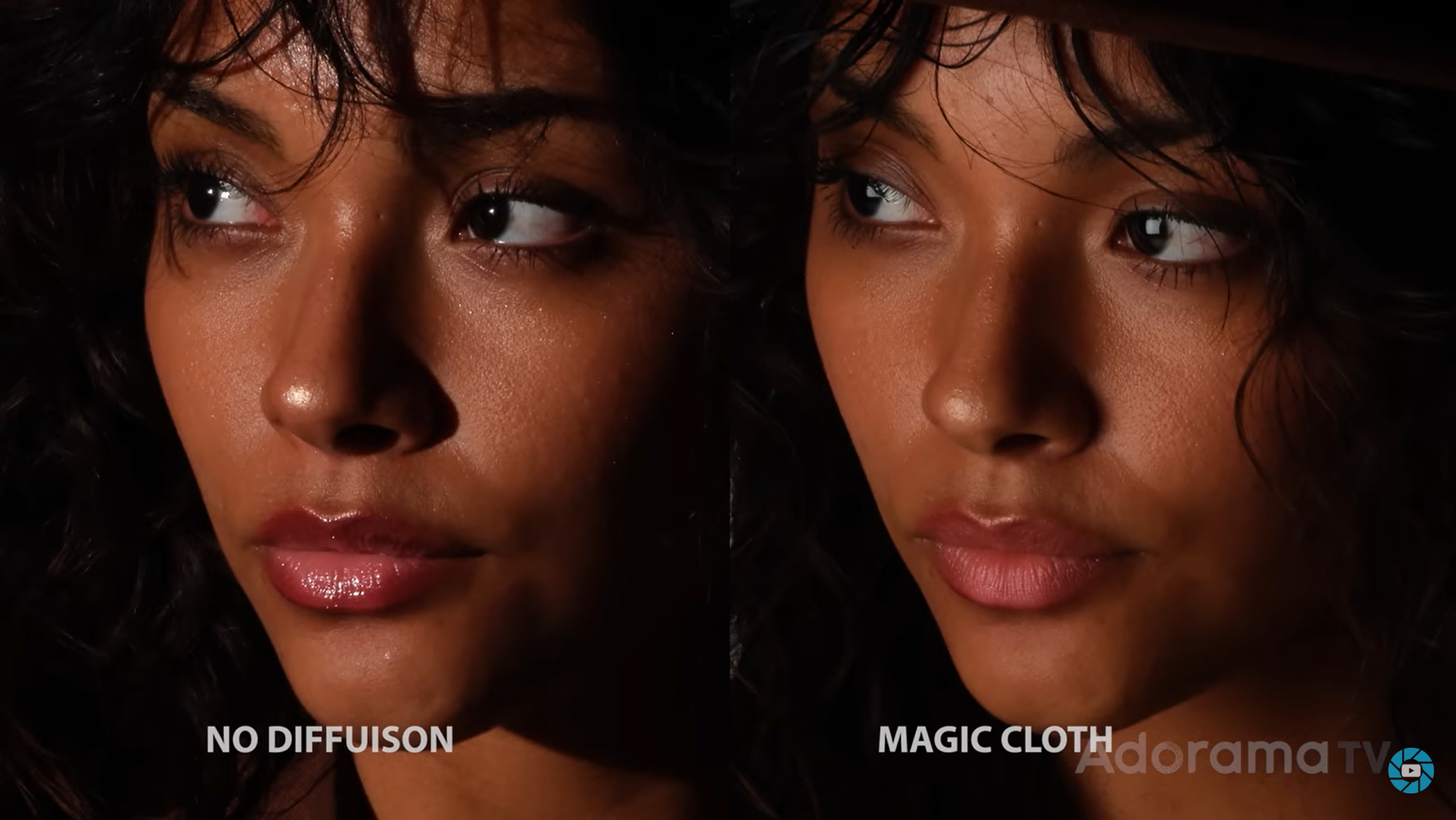
Three Considerations When Choosing a Diffusion
- Stability: When using generic materials, like a sheet or a shower curtain, you have no idea how it will respond to heat. Many Rosco diffusions have a “Tough” designation that indicates they are designed to withstand greater heat without melting, catching fire or quickly yellowing.
- Color Shift: Some materials can shift the color or color temperature of the light. Sometimes this is helpful for introducing color contrast. However, sometime when your key light shifts too much from the scene, things can start to look as if they are artificially lit.
- Size: Most Rosco diffusions come on 48”x25’ or 60”x20’ rolls. If you need a larger diffusion panel (a 12’x12’ frame, for example) then you’ll need to look into fabric diffusions that can be sewn – muslin, magic cloth, grid cloth, etc. – or vinyl materials that can be welded like R3014 Highlight.
Diffusion Placement Matters
The distance between your diffused light source and the subject will also affect the results. Below is the same Grid Cloth diffusion placed close to the model, then midway between the model and the light, and then close to the light.
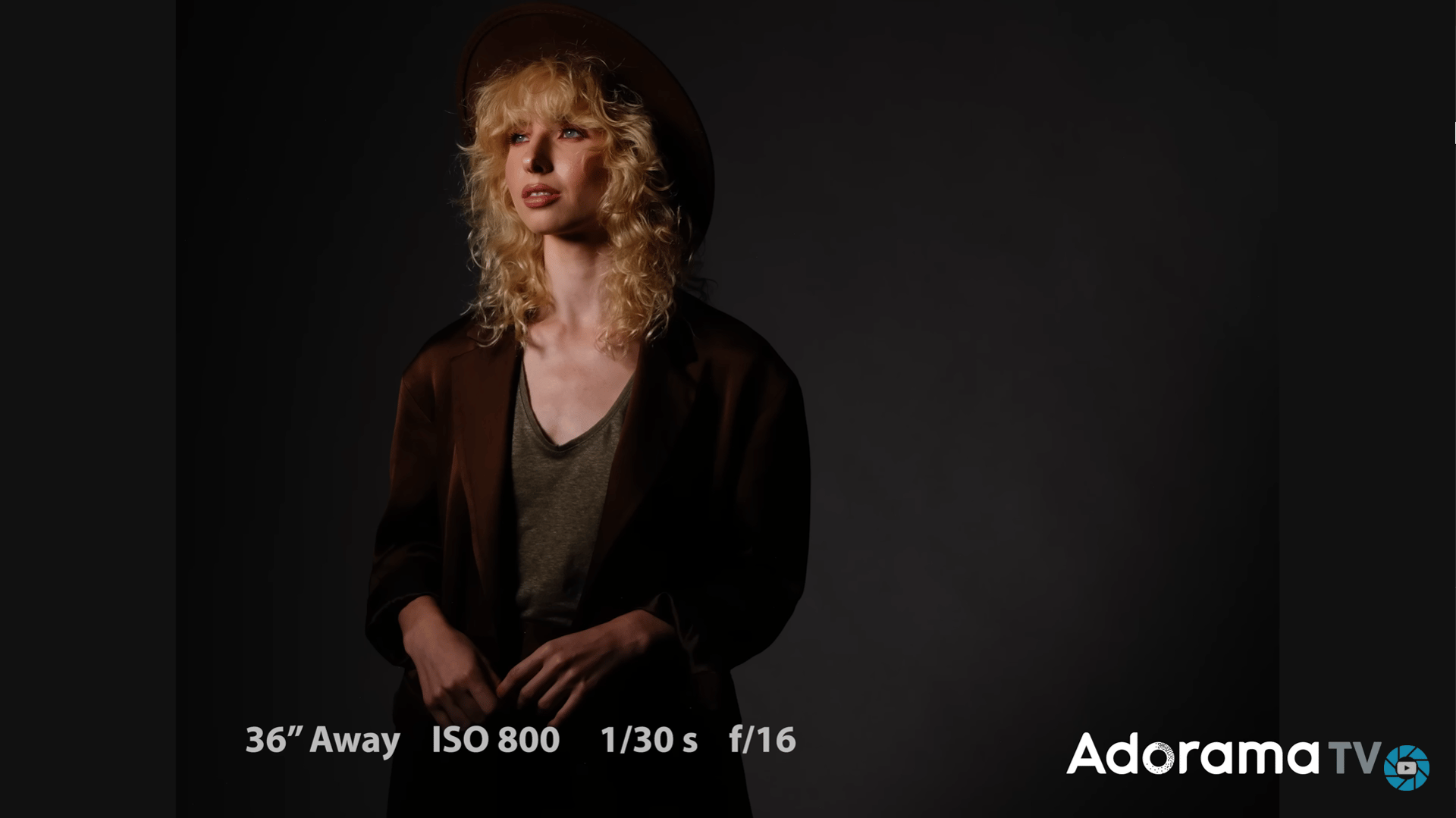
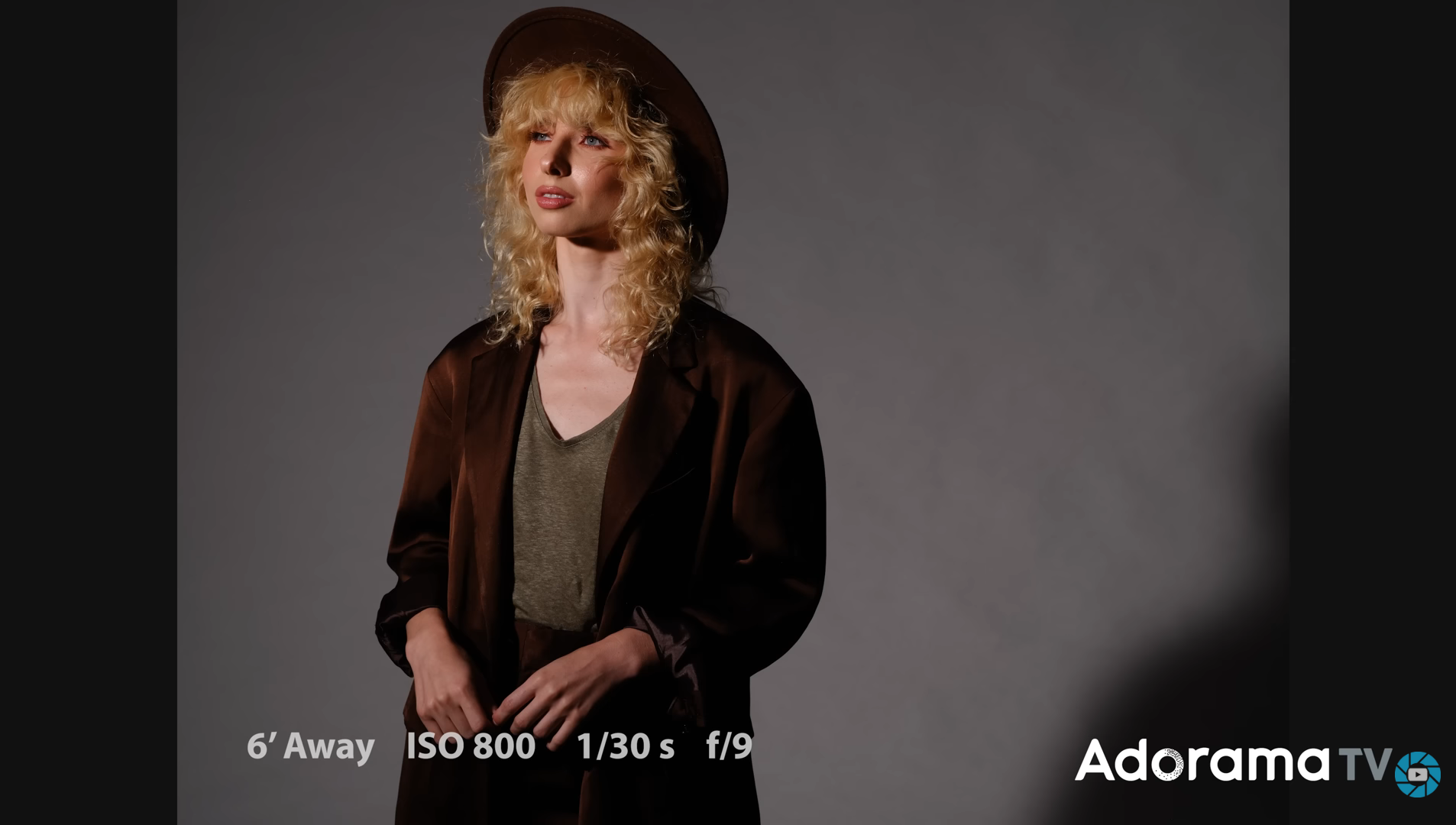
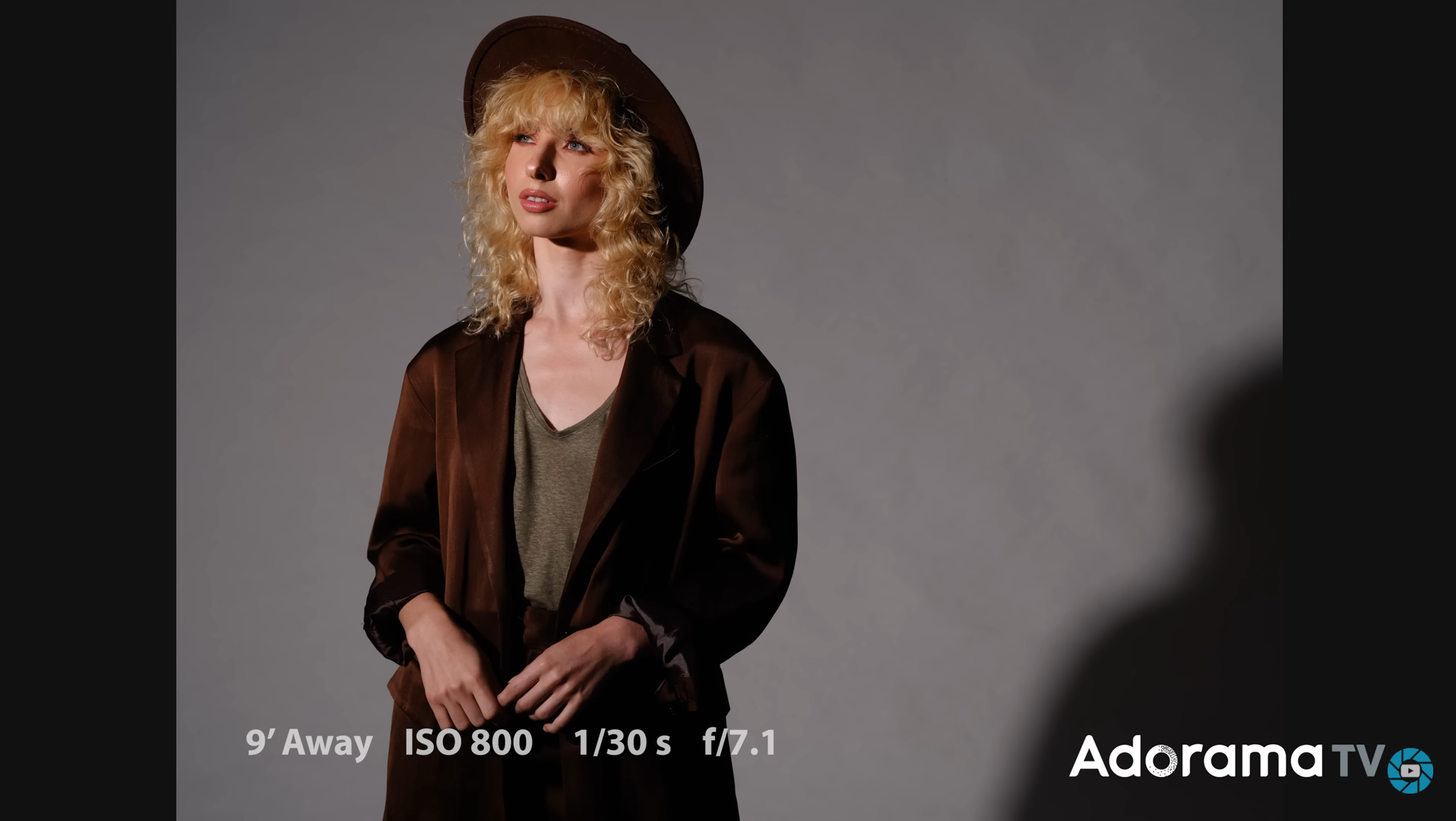
Conclusion
Ab Sesay’s examination into the different types of diffusion is an excellent demonstration of how different diffusions manipulate the light. At the end of the video, Ab showcases the effects of the diffusion materials he tested. We collected screen shots of this section and combined them together into one document so that you can easily compare the results side-by-side.

It’s important to remember, however, that this is just a guide. Testing diffusions with your equipment in your space is imperative. When dealing with light, don't take anything for granted and try it yourself. Most Rosco diffusions are available in affordable 20”x24” sheets – and a 12”x12” Diffusion Filter Kit is also available for testing.

